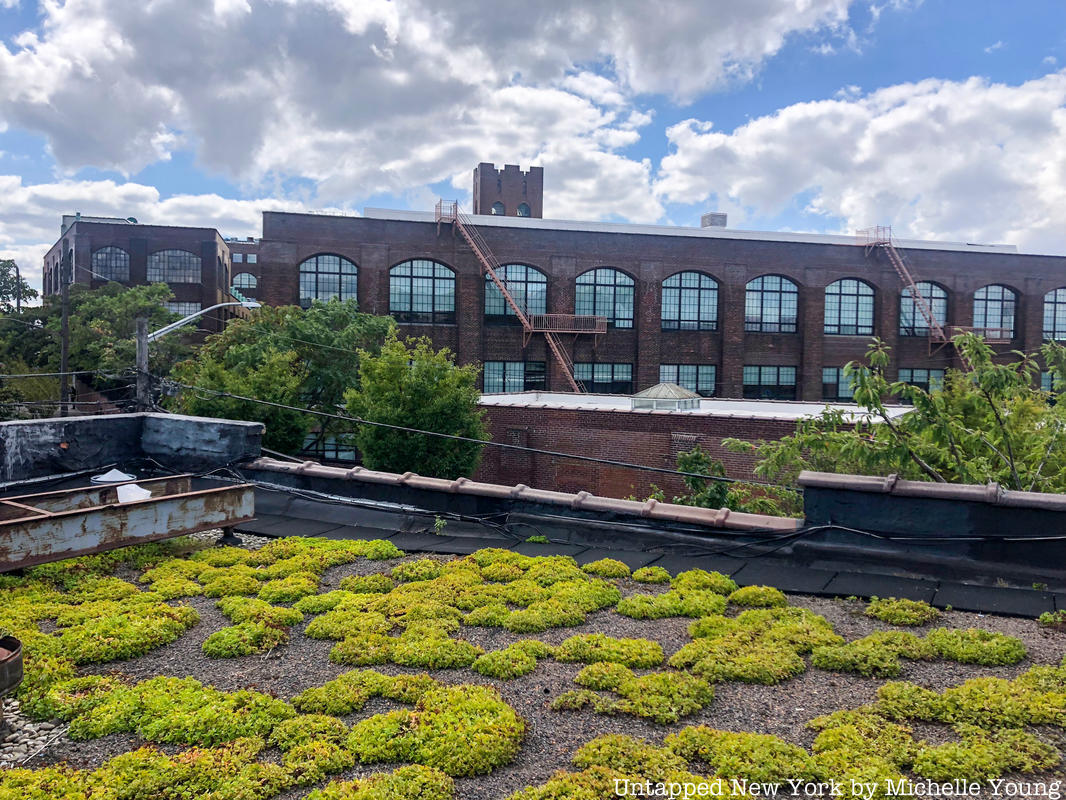On a rooftop in the Hunts Point peninsula of the Bronx, a green roof at THE POINT Community Development Corporation is also providing free internet to the local community, one of the few localized internet networks that exists in New York City. Situated inside a former bank note facility storage building since 1994, THE POINT is a local non-profit that is dedicated to youth development and the cultural and economic revitalization of Hunts Point. The building was affiliated with the American Bank Note printing plant, a landmarked building just a few blocks away that was completed in 1911 and is now home to the Bronx Bronx Business Incubator.
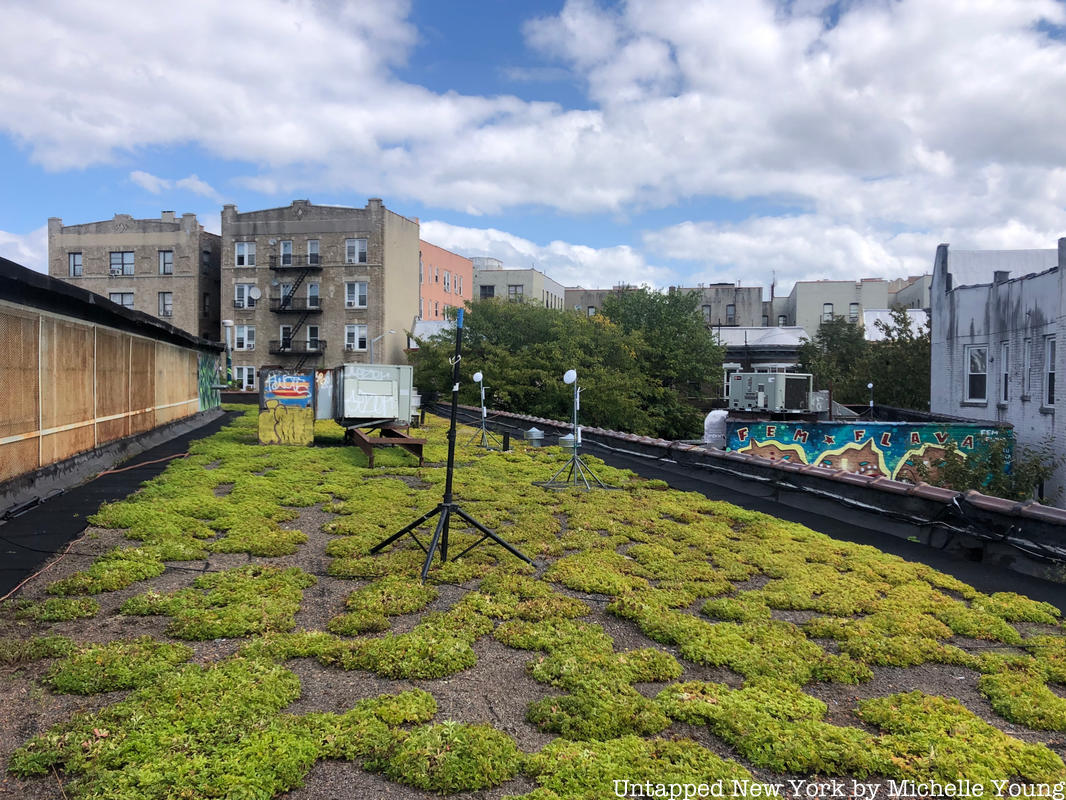
The green roof was installed at THE POINT as a proof of concept to demonstrate what can be possible on rooftops in the Bronx, particularly in a heavily industrial neighborhood that has very little access to green space. The streets consist of impermeable materials, with little to no tree cover, and are heavily prone to flooding. Additionally, the South Bronx is home to four combined sewer outflows (CSOs), where sewage is discharged directly into the city’s waterways when the system gets overloaded with stormwater. As a peninsula, Hunts Point’s long waterfront coastline and its low elevation make the neighborhood particularly vulnerable to storm surge. Critically, Hunts Point is also home to the New York City’s food distribution center, which supplies 60% of the food produce sales in the city, the Fulton Fish Market, a wastewater treatment plant, and other essential infrastructure (not to mention a floating jail barge which has a capacity of 870 detainees). A pure chance regarding the tides saved Hunts Point from complete inundation during Hurricane Sandy.
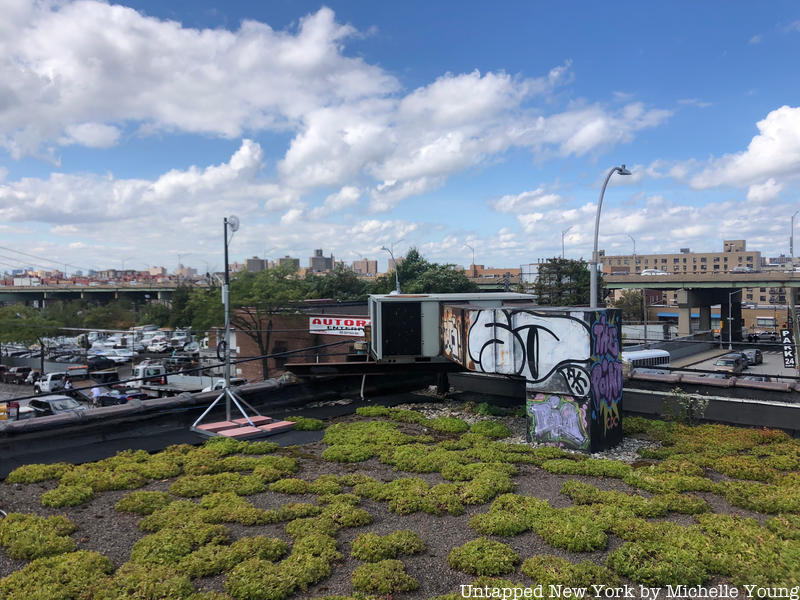
With the support of several grants, the roof was reinforced in order to make it stable enough to support a green roof. Perennials are sprouting through a multi-layered matting system that separates the roof from the actual plant growth and prevents water from seeping into the roof. Victor Davila, Action Program Director at THE POINT tells us that though green roofs are often touted for their ability to reduce pollution, a single green roof alone doesn’t make a huge impact: “In reality the amount of particulate matter we can absorb [here] is actually quite minimal,” he says. What the green roof does to is to “provide habitat for important species in our ecosystem. The more green roofs you have, the more habitat you have for the animals that can inhabit it…It’s kind of shame when new buildings are put up there isn’t a mandate to have a green roof,” Davila muses. To that end, they’ve see a lot of insects and birds either making the roof their home or as a stopping point. The low level brush of the perennials provide a great habitat for insects and other bottom chain species. “If you take care of the species at the bottom of the food chain, you take care of literally every species above it. If you have a healthy insect population (that isn’t outrageous), you help promote bird species,” says Davila.
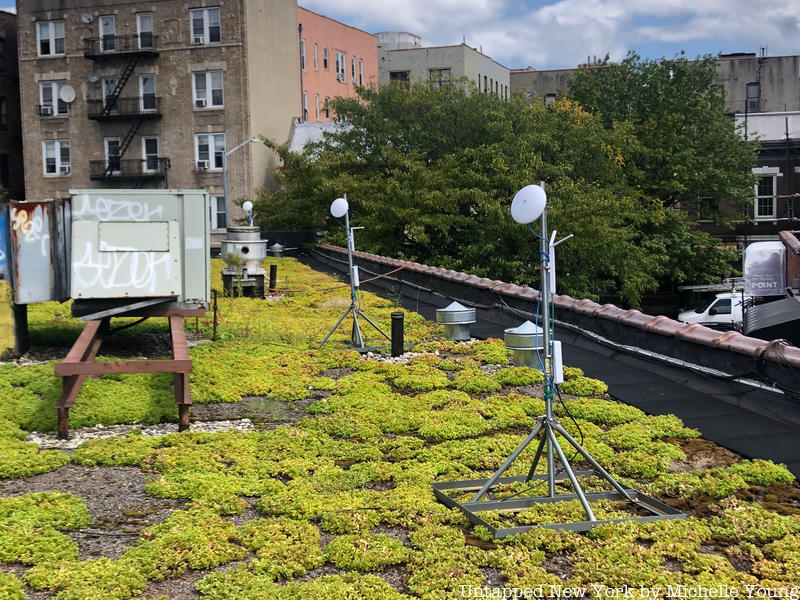 Equipment that is part of the Free Hunts Point Community WiFi program
Equipment that is part of the Free Hunts Point Community WiFi program
But the green roof at THE POINT has an additional function besides biodiversity and stormwater absorption. The roof is the home base for a neighborhood-wide connectivity project, the Free Hunts Point Community WiFi program, a mesh network launched in 2015 that provides WiFi through a network of routers and WiFi bouncers placed by volunteer business and residents. When internet service is functioning normally, the system provides WiFi to the neighborhood. But when disruptions take place, the network continues to function internally allowing for people in the community to connect with each other. The technology, which only requires simple devices, is usually seen in rural areas, rather than cities, and is more prevalent outside of the United States than here, says Yamil Lora, a Community Coordinator at THE POINT who runs the Digital Stewards Program that supports the Free Hunts Point Commmunity WiFi program. “We go from building to building, says Lora, “and we send a beam, a directional signal that goes from one building to another. Then inside the building we spread the internet with access points.” THE POINT was inspired by a mesh network that was installed in Red Hook, which proved very useful during Hurricane Sandy.
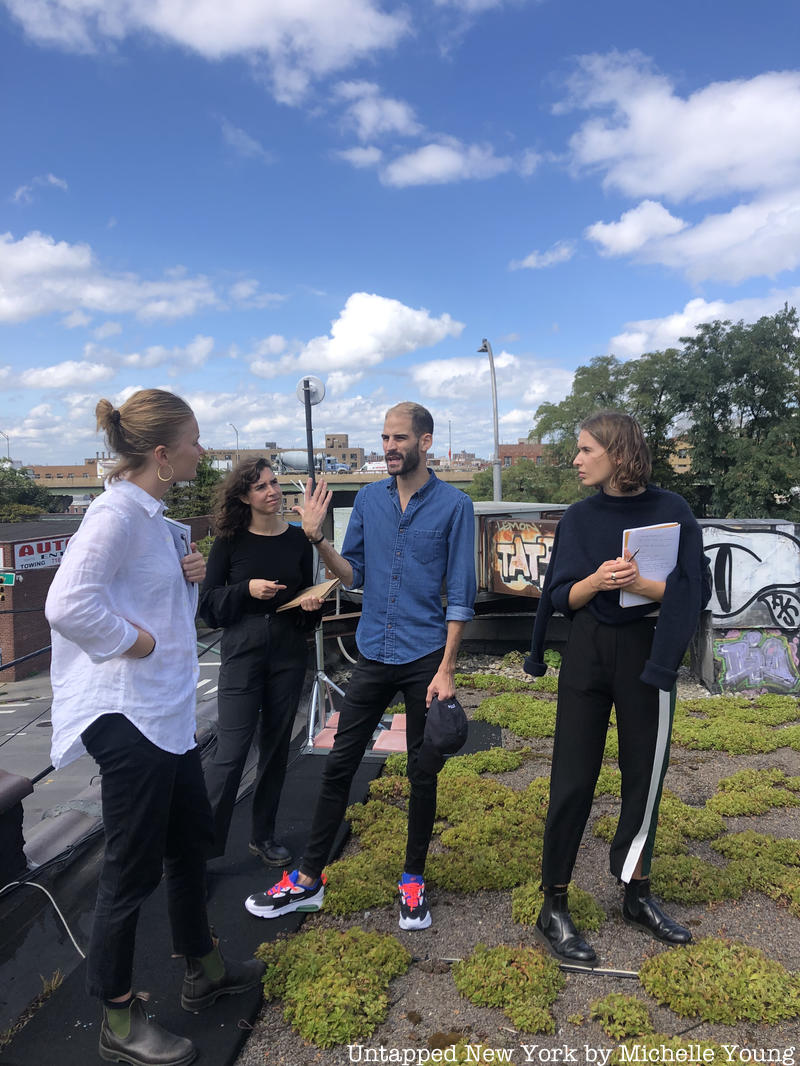 Fernando Ortiz of THE POINT with students from this author’s urban studies class at Columbia University GSAPP
Fernando Ortiz of THE POINT with students from this author’s urban studies class at Columbia University GSAPP
Like the green roof, the WiFi project is a resiliency response to climate change — specifically, the disruption that resulted from power outages in Hurricane Sandy. Davila says, “The Bronx, more than most populations in New York City is incredibly vulnerable. There’s a long history of a lot of social services, infrastructural care, driven away from us by very very lackluster administrative decisions. As a result of that, you have a population when worst comes to worst, feels abandoned in times of crisis.” The WiFi project is a bottoms-up effort, “making sure that we can protect ourselves, we can remain in contact with each other, and our neighbors and community. It creates a localized network, so even if the internet goes down, people can still contact each other and coordinate with each other via the network.”
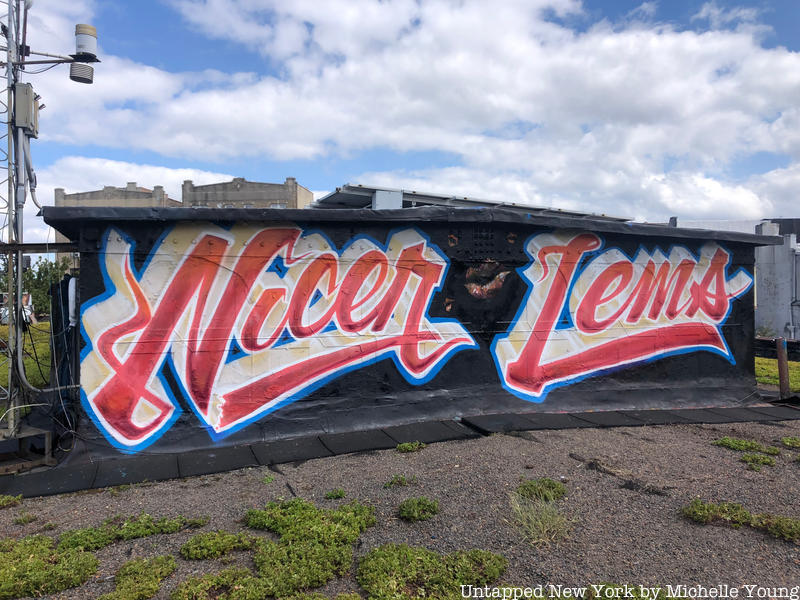 The street art group Tats Cru has a residency at THE POINT
The street art group Tats Cru has a residency at THE POINT
A high percentage of homes in Hunts Point do not have access to the internet. According to the a report from the office of the New York City Comptroller, Scott Stringer, as of 2015 35% of households in the Bronx lacked broadband at home, and that figure is even higher in Hunts Point, with nearly 41% of households in Districts 1 and 2 (which includes Hunts Point, Mott Haven, Port Morris, Longwood, and Melrose) lacked internet access. This compares to 29 percent in Brooklyn, 22 percent in Queens, 21 percent in Staten Island and Manhattan.
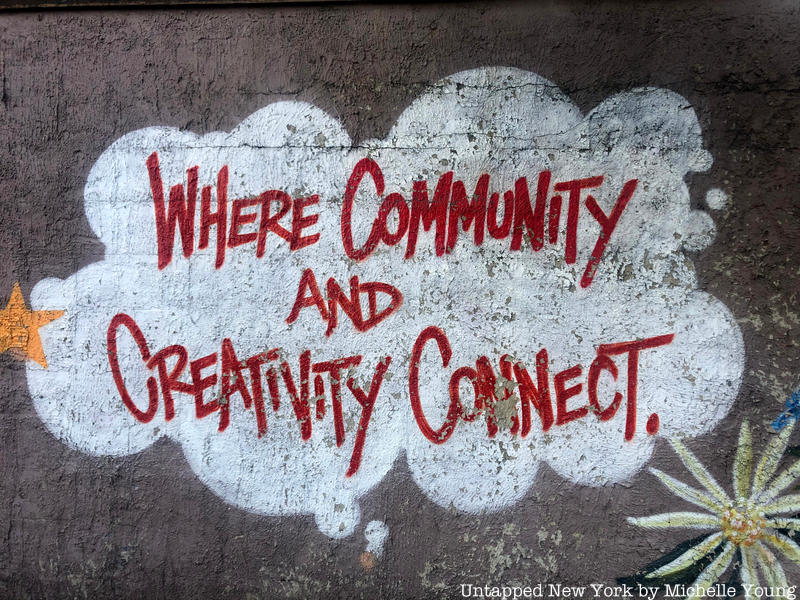 On an outside wall of THE POINT
On an outside wall of THE POINT
Lora adds, “Our goal is to build a community-run and led network so people in the locality and vicinity can make decisions as simple as what happens to their data, or what is the speed of the internet, or where do they access [the internet], what sections of the neighborhood should have internet.” Lora is wary about our society’s dependency on internet providers, which essentially operate monopolies on certain portions of the internet supply process. Through a long history of acquisitions, Verizon essentially owns all the wires underground. “Everyone has to be pay Verizon, explains Lora, “They’re the main landlord in the USA. They don’t have an open field of competition. Optimum and Spectrum have to be pay Verizon rent. They’re the landlords, and they have most of the business capture. They’re forced to rent out space. That’s a very worrisome situation especially given how important internet is for the world. Basically we depend on one company and their only interest is money. They can discriminate against you for any reason…We depend on these companies to give us basically, our breathing air. This is a very dangerous degree of dependency.”
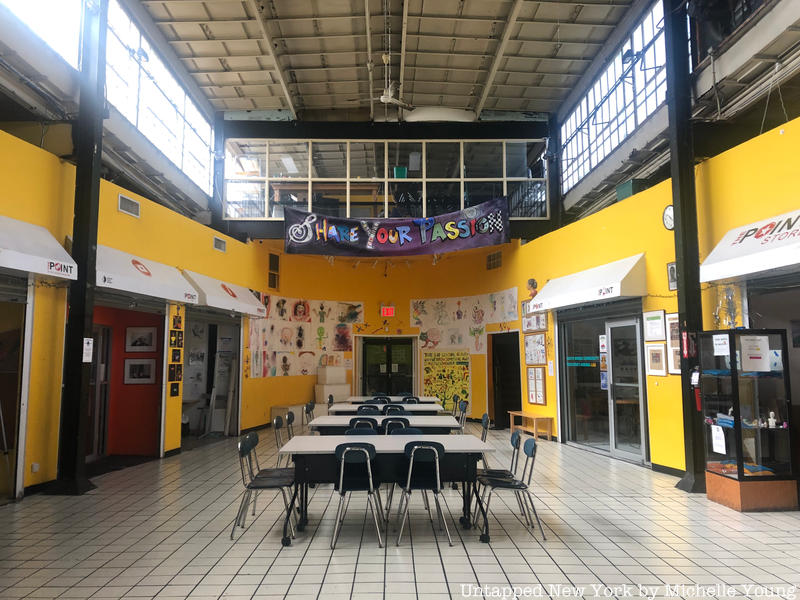 Inside THE POINT CDC. The upstairs mezzanine level is a room where the Digital Stewards work
Inside THE POINT CDC. The upstairs mezzanine level is a room where the Digital Stewards work
An equally important part of the Free Hunts Point Community WiFi program is the know-how THE POINT is developing with its youth in the Digital Stewards Program. “Expertise is not usually located in low income communities to build these networks,” explains Lora, “We’re changing that. That’s a very important part of the project. We’re training young people and also adults in our neighborhood, and we call them digital stewards. We’re teaching them the basics of networks, and how to understand these new mesh community networks.”
More recently and on a larger scale, a company like NYC Mesh is providing an alternative internet service with similar technology for significant areas of lower Manhattan and Brooklyn for an optional membership fee but the Free Hunts Point Community WiFi program is unique because of its roots in community stewardship. Lora reflects, “The most important thing for me [is that ] the work is done with a sense of ownership and with a sense of responsibility to know why we do this. We’re not doing this because we want to connect the internet, or just because we want to make money out of it. We’re doing something new that has little to no precedent specially in the U.S., especially in New York City, and especially the Bronx. It moves at the speed of the community, and the neighbor next door understanding why she needs a different way to use the internet. …but the progress is strong. Every step we move forward is forward.”
Check out more initiatives from THE POINT CDC here.
Next, check out what it looks like inside the Hunts Point Food Distribution Center.






